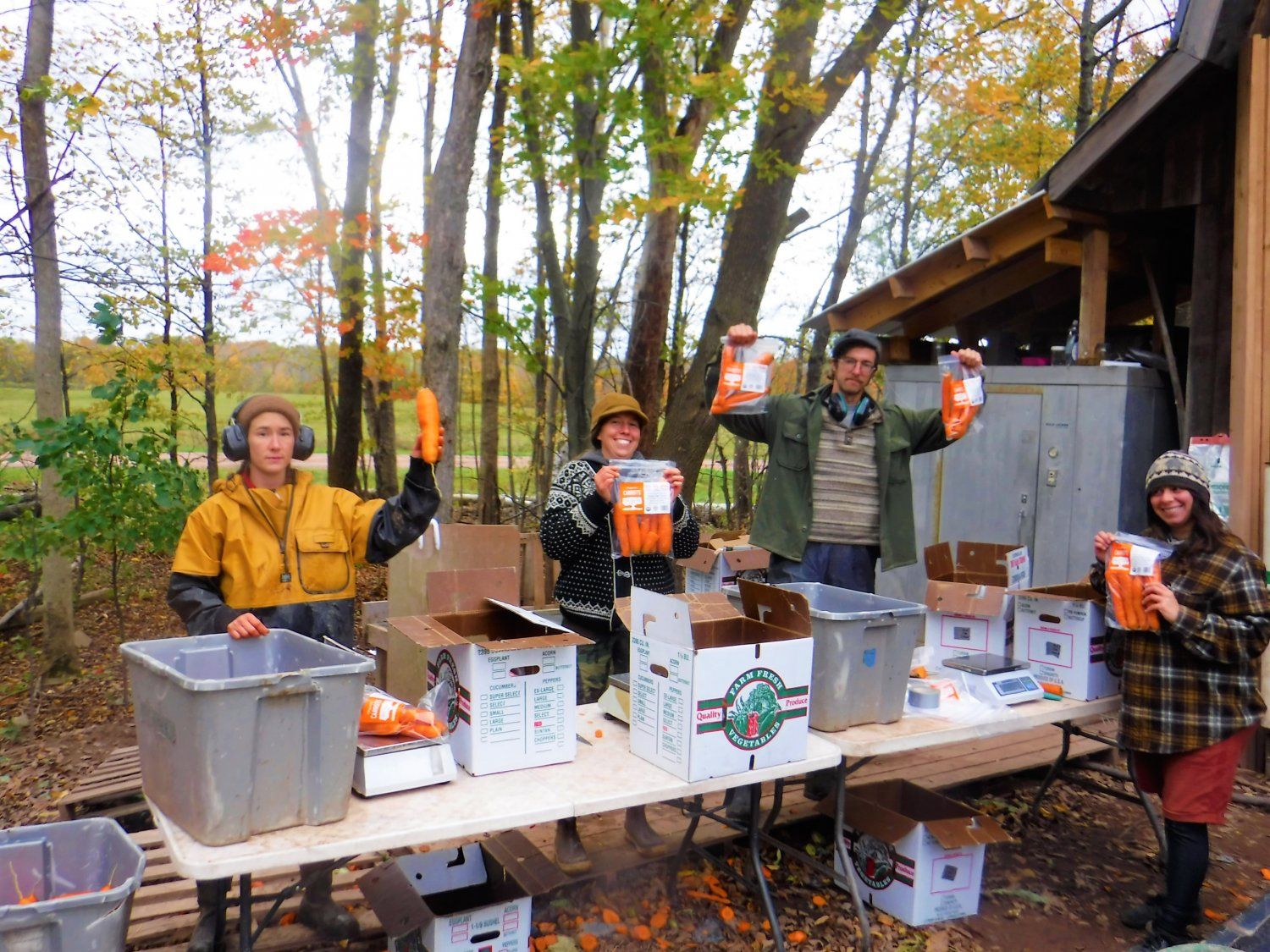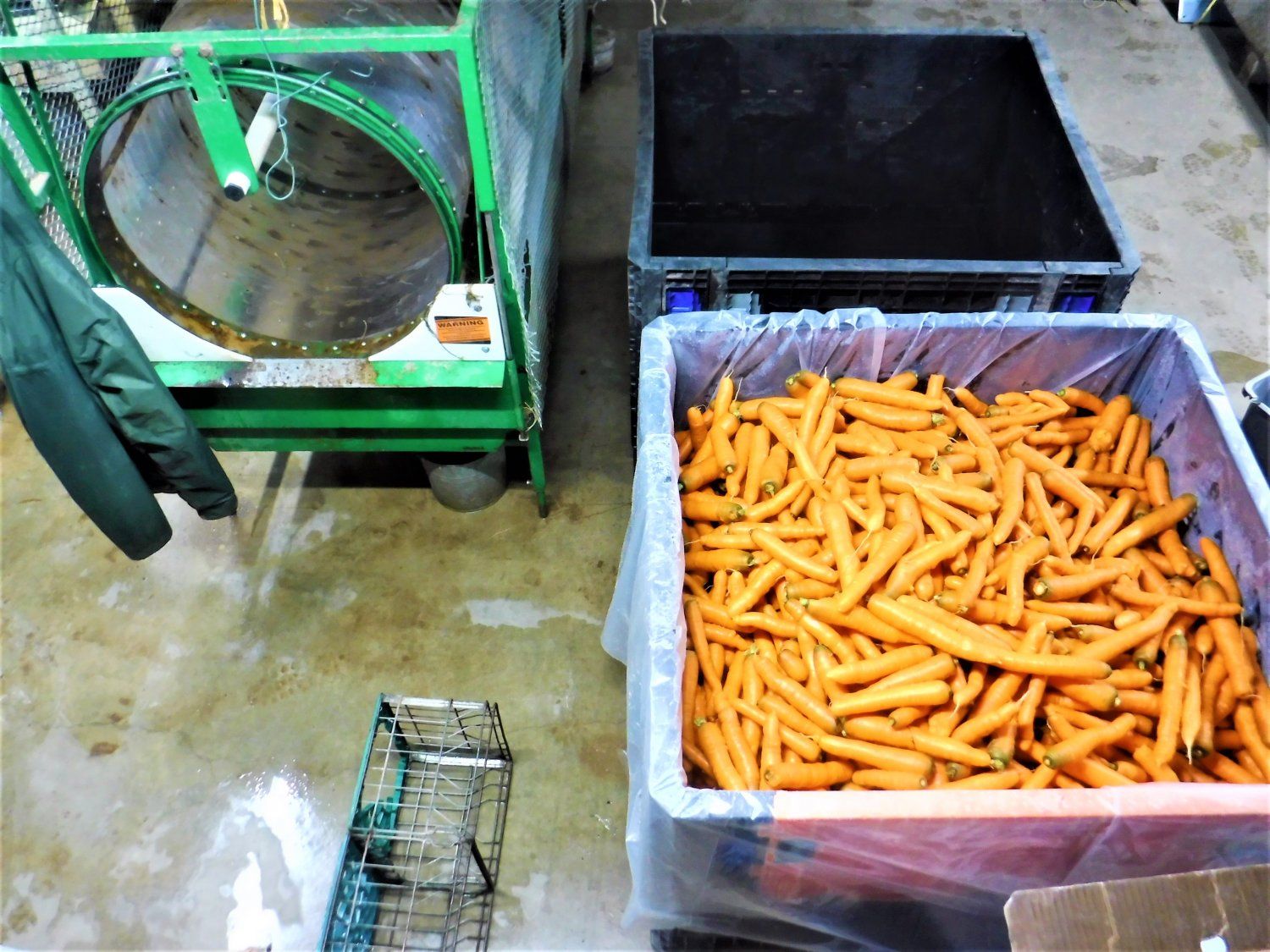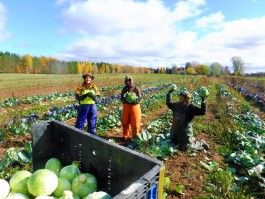FINALLY we're getting some cold. I know some of you might have really enjoyed this warm fall, and honestly we have too, but getting back to some kind of normalcy feels mighty nice. Our root cellar is getting cool enough now to store winter crops without worry, so we got right to work late this week cutting cabbage. Despite the drought, we still hit our harvest targets for cabbage. The work we are putting into building organic matter in the soil and supporting soil microorganisms through cover cropping is clearly working. A big win for Organic agriculture!
Another victory we had this week revolved around our winter spinach planting. The spinach got off to such a good start this fall, but then we began to see dreaded signs of disease - white spots on the underside of the leaves. We kept the spinach beds well weeded and left the hoophouse sides wide open to maximize airflow, we minimized irrigation to keep the soil as dry as possible, and crossed our fingers. Good news - it worked! The leaves cleared up nicely and it looks like we dodged the bullet. But because of the close call, we decided to take some preventative steps going forward to be more proactive with disease prevention through better crop rotation.
Most years, we aim to have each of our hoophouses planted down to spinach in the fall or early spring to maximize yields in them while they are too cold for most other crops to grow, and it has worked pretty well. However, we knew it was only a matter of time until not practicing crop rotation would catch up to us, and diseases and/or pests would get a foothold.
Well, that time has come. This spring, we had some beds that were hit by disease, and then in another hoophouse this fall we saw signs as well (the one that thankfully cleared up!)So, in order to keep disease at bay organically, we'll be dialing back our spinach production over the winter seasons going forward, limiting spinach to only one hoophouse per year, giving us a 3-4 year rotation between spinach being planted in the same space.
The good news is that since we are farming in a cooperative, Farmer Brian at Northcroft Farm can boost his winter spinach production to help keep spinach coming through the winter and spring.Here's the current situation - you can see our spinach this fall /winter is ready for another weeding, but looking great now.
In the mean time, here at Great Oak Farm we will be experimenting with other hardy cool season crops to grow in those hoophouses to fill the space with something productive during the ''off season" up here. One crop we are growing this fall is mustard greens, and they are turning out really nicely.
I know, I know, spinach is waaaaay sexier than mustard greens, but give those mustard greens a chance! They are packed with more vitamin A and potassium than spinach, and more vitamin C than oranges believe it or not! Some varieties of mustard greens can have quite a bit of heat or spice to them, but the ones we are growing this fall are very mild. I like to joke that I have such a "delicate palette" that ketchup is about as spicy as I like, so if I like these mustard greens (and I do!) you better believe they are pretty darn mild! In fact, if you eat very much salad mix, you might be eating mustard greens already - many premixed salad greens contain mustard greens for added flavors, texture, and loft.
Give 'em a try, expand your green-horizons, and see what you think. They are great raw chopped up as a salad or added into salad mix for more variety, and can also be cooked as a wilted green similar to spinach if you prefer. And know that by eating mustard greens on occasion, you will be also supporting sustainable production of that spinach we all love so much! You can think of it like cuts of meat as well - sure, we all like chicken breast, but we have to use the other cuts as well. Whether it's around food production or community development, whole system thinking is what will be resilient in the long term, and we're in this for the long haul.
The weather this weekend will not likely be cold enough to freeze out our tomato hoophouses, so we're keeping our fingers crossed for another week or 2 of those as well. I love looking up through the roof of the hoophouse at the colorful fall leaves that blow off and land there, or the trees turning colors outside. It's such a funny contrast, the cheery tomato vines with new blossoms against the backdrop of autumn outside. They are truly the last holdouts of summer!
This week we (and Northcroft Farm as well) received our delivery of Vermont Compost for the 2022 growing season. It seems crazy to have compost delivered all the way from Vermont, but I tell you this stuff is THE best compost based potting mix around. We're not the only farm that thinks this way either - lots of organic veggie farms across the midwest and beyond rely on Vermont Compost to get our transplants off to the best start possible. We've tried lots of other potting mixes, and keep coming back to Vermont Compost for a reason. Plants love it.We've been planning for the 2022 growing season already for a while now, but the delivery of the potting soil always seems like the "official" start of the new season. Summer 2022, we're comin' for ya!
One final logistical note: we're nearly finished with the Summer CSA season, which runs through the last week of October. If you get your CSA box every-other week, either this week or next week will be the final week of the 2021 Summer season for you. If you get a weekly box, you've still got this box and one more remaining before we transition into the Winter CSA season. If you haven't yet signed up for a Winter season CSA box to keep the good stuff coming, do so quickly!
Availability for Veggie boxes is limited based on our fall harvests, but we do still have a few slots left for other options such as Meat, Bakery, and other boxes. Thanks so much for making the commitment to adding more local, seasonal foods to your diet!
In community,
Farmer Chris
Great Oak Farm

.JPG)
.JPG)
.JPG)
.JPG)
.JPG)



